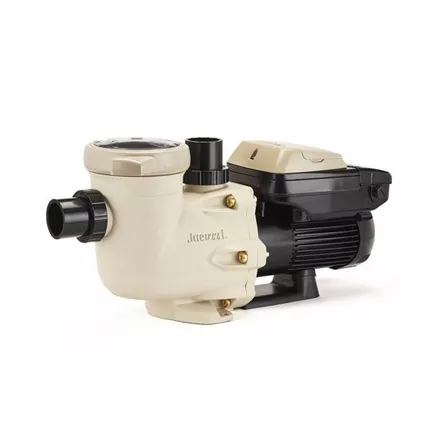FREE Standard Shipping On All Orders $100 or More!*

Pool Pump Maintenance 101
A smooth-running pool starts with a well-maintained pump. Whether you're a new pool owner or a seasoned pro, these pool pump maintenance tips cover everything you need—from weekly checks to seasonal tune-ups and troubleshooting.
Know Your Pool Pump
Most residential pools use a variable speed pool pump powered by an electric motor. Here’s a breakdown:
Strainer Basket
Pump Lid
Pump Motor
Strainer Basket (Hair & Lint Strainer)
The pump strainer basket catches large debris before it reaches the impeller.
Pro tip: Clear it weekly to avoid clogs and pressure issues.
Pump Lid & O-Ring
A tight seal on the pump lid is key for proper suction.
Pro tip: Clean the lid and lubricate the O-ring with a tennis-ball-sized dab of silicone grease regularly.
Impeller & Diffuser
The impeller and diffuser move water through your pool’s filtration system.
Pro tip: If suction drops, clean them to remove hair and debris buildup.
Pump Motor
The heart of the operation, the pump motor keeps your pump running with steady power.
Pro tip: Keep the intake clear for good airflow and inspect electrical cords for wear.
Why Pumps Need Regular TLC

A neglected pool pump leads to:
- Reduced water flow
- Higher energy costs
- Wear on components
- Risk of pump failures or freeze damage
Staying on top of care protects your pump and keeps your pool inviting.
Weekly Pool Pump Maintenance Routine
Dedicate a few minutes each week to these essential tasks:
- Empty the Pre-Filter Basket: Turn off the pump, release the lid, and clear out debris—essential for peak performance.
- Inspect the Lid & O-Ring: Clean both surfaces and apply a bit of silicone grease—helps prevent air leaks.
- Listen for Odd Noises: Humming, grinding, or squealing? These could indicate bearing problems or misalignment.
- Check Pressure Gauges: Fluctuations could mean filter issues, leading to reduced flow or strain.
Seasonal Maintenance Overview

Your pump’s needs change with the seasons—here’s when and how to tune it up:
- Spring: Give everything a once-over: hoses, baskets, and especially the O-ring. Clean the impeller if needed.
- Summer: With heavy pool usage, tighten maintenance to keep pressure and flow where they should be.
- Fall: As debris increases, check baskets more frequently and do a deep clean before cold winds hit.
- Winter: In colder climates, winterize your pump: drain all water, clean and dry parts, and store them for protection.
Troubleshooting Common Issues
Quick solutions for typical pump problems:
- Weak Suction or Low Flow: Clean baskets, check O-ring, and inspect hoses for leaks or kinks.
- Pump Losing Prime: Refill pump with water, clean the lid and seal, and check for air leaks.
- Motor Overheating: Make sure the intake area is free from blockage and airflow is clear.
- Strange Sounds: Humming could mean clogged impeller; grinding might indicate bad bearings. Call a pro before it worsens.
Final Thoughts
By keeping up with weekly checks, seasonal care, and quick troubleshooting, you’ll extend the life of your pump, reduce energy costs, and enjoy crystal-clear pool water. It’s simple: regular attention today keeps expensive repairs away tomorrow!